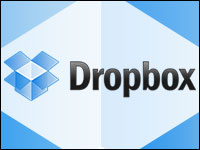
At DBX, Dropbox’s first-ever developer conference, the company on Tuesday announced a suite of new tools designed to make it easier for developers to bring its file-syncing technology to new devices and platforms.
“We want to be sure that stuff is always available, no matter if you’re on your laptop at work, a tablet on a plane or a smartphone on the bus,” wrote company founders Drew Houston and Arash Ferdowsi in a blog post. “Keeping devices and apps synced with your most up-to-date info has gone from ‘nice-to-have’ to essential, which creates a real challenge for the people developing apps.”
Building on the Sync API for iOS and Android that Dropbox unveiled earlier this year, the company this week extended its Dropbox Platform further with its new Datastore API and “drop-in” technologies called Chooser and Saver.
‘Up to Date Across Devices’
The Datastore API aims to provide a new model for storing and syncing app data.
“When you use an app built with datastores, your data will be up to date across all devices, whether you’re online or offline,” the company explained.
For example, users of a task-tracking app built with the new Datastore API could check off items from their phone and add items from their computer without creating confusion and conflicts.
Dropbox’s new drop-ins, meanwhile — essentially, user-interface components that can be quickly integrated — let developers connect to hundreds of millions of Dropboxes with just a few lines of code. Chooser, for instance, “gives people access to the files in their Dropbox from Web and mobile apps,” while Saver allows them to save files to Dropbox with just a single click, the company said.
Both are already in action in Yahoo! Mail, Shutterstock, and Mailbox, Dropbox noted.
Dropbox declined to provide further details.
‘A Pretty Big Impact’
Now claiming more than 175 million people using its service to store data files including photos, documents and videos, Dropbox appears to be taking on not just Apple’s iCloud but also the ubiquitous local hard drive.
“Dropbox has always had a grand vision of secure and shared access to any type of file from any type of device,” said Maureen Fleming, program vice president for BPM and middleware at IDC. “They started with files consumed by people but have been evolving to support files consumed by applications.
“Files range from content to XML to structured data stored as a file,” Fleming told TechNewsWorld. “The idea behind Dropbox is about ease of access, but the impact includes a reduction in total storage across all devices that are part of the Dropbox network. That has a pretty big impact for consumers and businesses.”
The Sharing Concept
This sort of shared data could further influence app developers as well.
“It will be interesting to see how sharing works in this scenario, and the new styles of apps that can be built around the sharing concept,” Fleming noted.
“Currently, I can share a document with someone on Dropbox, and I could share an XML file I store on Dropbox,” she explained. “I look forward to seeing sharing built more discretely from within an app to do something like share a contact that is stored in Dropbox.
“In that case, no one has to move the contact around, we just can all share it,” she added.
The overall effect is a greater reduction in storage and greater reliability, Fleming pointed out.
“If I update the contact because there’s a new phone number or email address, everyone who shares it with me benefits by the update rather than all of us individually needing to make the change,” she noted.
‘Local Storage Has Become So Cheap’
However many benefits functionality like this brings, could it actually make local storage obsolete?
“It won’t go that far,” Charles King, principal analyst at Pund-IT, told TechNewsWorld.
“The number of people who have moved the vast majority of their data to the cloud still remains a tiny minority,” King pointed out. “The fact is that local storage has become so cheap that the value of eliminating hard drives or SSD seems nonsensical. You are paying pennies for it, so why not use it.”
Regardless of Dropbox’s effect on hard drives, it could certainly spoil Apple’s plans for the cloud.
“A lot of people think about this in relationship to Apple iCloud, but Dropbox has broader implications,” Fleming suggested.
“iCloud is not really about sharing among users, it’s about Apple getting great economies of scale by consolidating its music library and permissioning access,” she added.
Dropbox, on the other hand, “is about allowing developers to create their own version of economies of scale and also letting users create their own shared assets with their family, friends and associates,” she concluded. “Sort of like social data.”





















































